

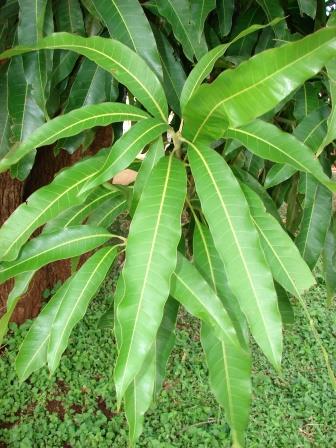
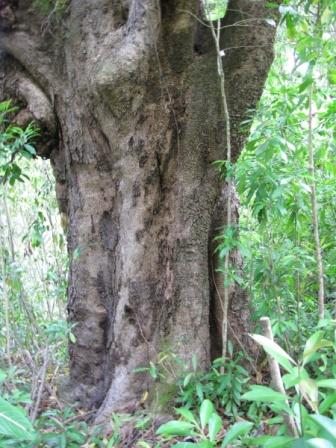
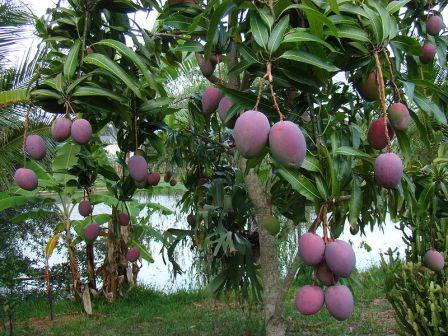
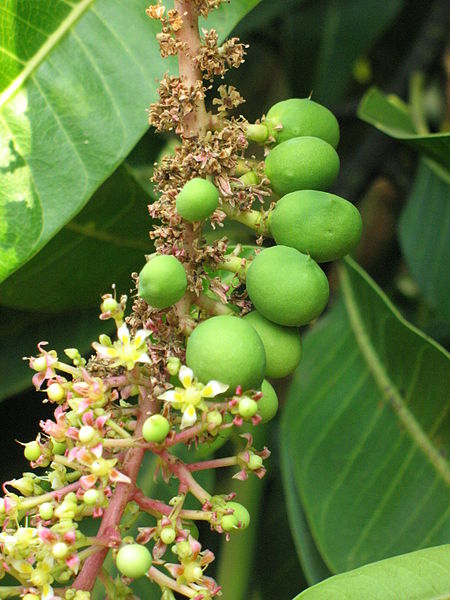
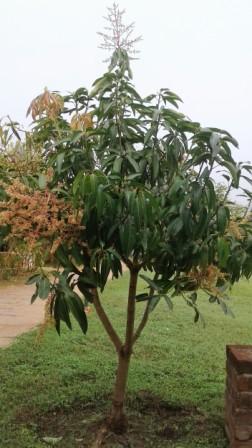
• It is a large evergreen tree with dense umbrella shaped crown• Bark brown in color• Leaves dark glossy green in color, pinkish when young.• Fruit a fleshy drupe yellow in color when ripe containing one seed.
• The tree is widely found and cultivated in all parts of India.
• It is propagated by seed. • The seeds germinate readily on the ground at the commencement of rains in large numbers.
• The ripen seeds obtained in April-July. • The pulp is removed from the stone and sown in well-loosened soil because the seed quickly losses it vitality. • Germinative capacity is 80-85%.• Plant percent is 40 to 80%.
No pretreatment is required.
• The seeds are sown in mother bed in July.• When the seedlings attain two leaf stages, it is transplanted to 22.5 cm2spacing when they are one year old.• This one seedslings are pricked out with ball of earth to large size poly bags and mained for one year.• 2 year old nursery raised plants are fit for planting.
Field preparation:• Dig pits of 1 m x 1 m x 1 m.• Fill in with topsoil mixed with 10 kg of FYM and 100 g per pit.Spacing:• Adopt any one of the following spacing depending on requirements.• Under conventional system of planting: 7-10 m either way• High Density Planting : 5m x 5 m (400 plants /ha)• Double hedge row system : Adopt a spacing of 5m x 5m within double rows and 10m between successive double rows (266 plants/ha)• Grafts are planted in the centre of pit with ball of earth intact followed by watering and staking. • The graft union must be 15 cm above the ground level.
• Weeding is necessary. • The plantations are weeded thrice in the first year and twice in the second year. • Soil working around the seedlings to radius of 30 cm and depth of 8-10 cm is carried out with in the first and second year.
For proper growth and survival it is necessary to give one or two waterings after planting. This is specifically required in arid regions. Irrigation after planting is not a prerequisite in areas having sufficient soil moisture and precipitation. Higher survival rate and better rate of growth is reported when soil and water conservation measures are also adopted.
• Maximum 75 years.• Harvest spreads from March to June.
Yield varies with varieties and spacing adopted.• 8 – 10 t/ha up to 15 years.• 15 – 20 t/ha from 15 – 20 years.
• Mango is cultivated for the fruit, which can be eaten in 3 distinct ways, depending largely on the cultivar: ripe and processed in the form of pickles or chutneys, dried slices, canned slices in syrup, juice and puree or paste• The wood is used for making indoor construction, meat-chopping blocks, furniture, carpentry, flooring, boxes, crates and boat building (canoes and dugouts).
Fuel: With a calorific value of 4200 kcal/kg, the wood makes excellent charcoal and firewood. Timber: The wood is used for many purposes, including indoor construction, meat-chopping blocks, furniture, carpentry, flooring, boxes, crates and boat building (canoes and dugouts).
0.105 tC/tree